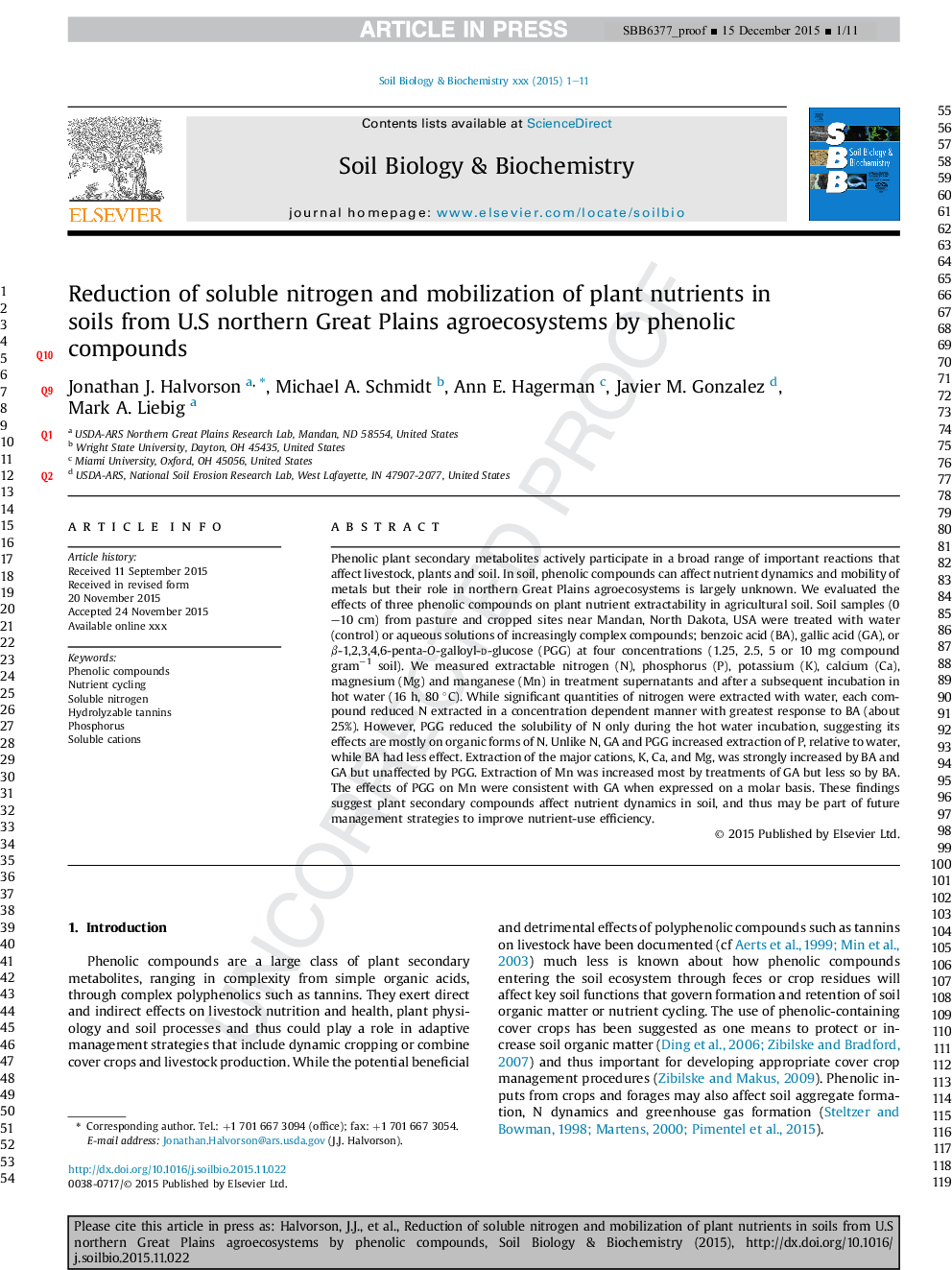| Article ID | Journal | Published Year | Pages | File Type |
|---|---|---|---|---|
| 8363627 | Soil Biology and Biochemistry | 2016 | 11 Pages |
Abstract
Phenolic plant secondary metabolites actively participate in a broad range of important reactions that affect livestock, plants and soil. In soil, phenolic compounds can affect nutrient dynamics and mobility of metals but their role in northern Great Plains agroecosystems is largely unknown. We evaluated the effects of three phenolic compounds on plant nutrient extractability in agricultural soil. Soil samples (0-10 cm) from pasture and cropped sites near Mandan, North Dakota, USA were treated with water (control) or aqueous solutions of increasingly complex compounds; benzoic acid (BA), gallic acid (GA), or β-1,2,3,4,6-penta-O-galloyl-d-glucose (PGG) at four concentrations (1.25, 2.5, 5 or 10 mg compound gramâ1 soil). We measured extractable nitrogen (N), phosphorus (P), potassium (K), calcium (Ca), magnesium (Mg) and manganese (Mn) in treatment supernatants and after a subsequent incubation in hot water (16 h, 80 °C). While significant quantities of nitrogen were extracted with water, each compound reduced N extracted in a concentration dependent manner with greatest response to BA (about 25%). However, PGG reduced the solubility of N only during the hot water incubation, suggesting its effects are mostly on organic forms of N. Unlike N, GA and PGG increased extraction of P, relative to water, while BA had less effect. Extraction of the major cations, K, Ca, and Mg, was strongly increased by BA and GA but unaffected by PGG. Extraction of Mn was increased most by treatments of GA but less so by BA. The effects of PGG on Mn were consistent with GA when expressed on a molar basis. These findings suggest plant secondary compounds affect nutrient dynamics in soil, and thus may be part of future management strategies to improve nutrient-use efficiency.
Related Topics
Life Sciences
Agricultural and Biological Sciences
Soil Science
Authors
Jonathan J. Halvorson, Michael A. Schmidt, Ann E. Hagerman, Javier M. Gonzalez, Mark A. Liebig,
